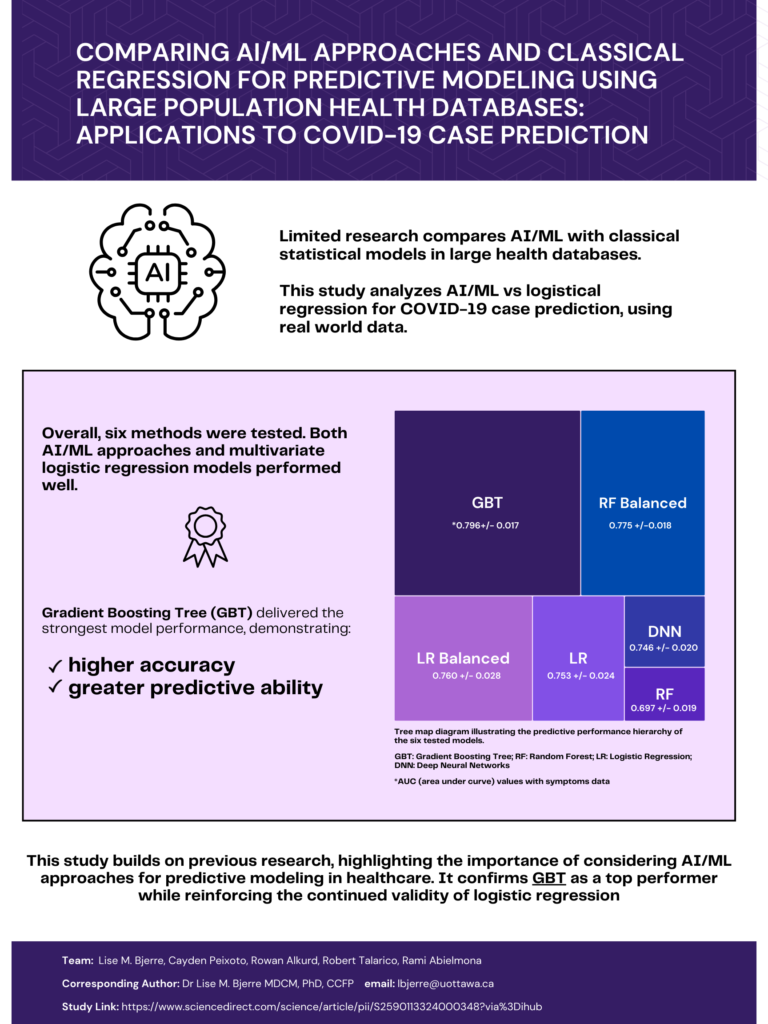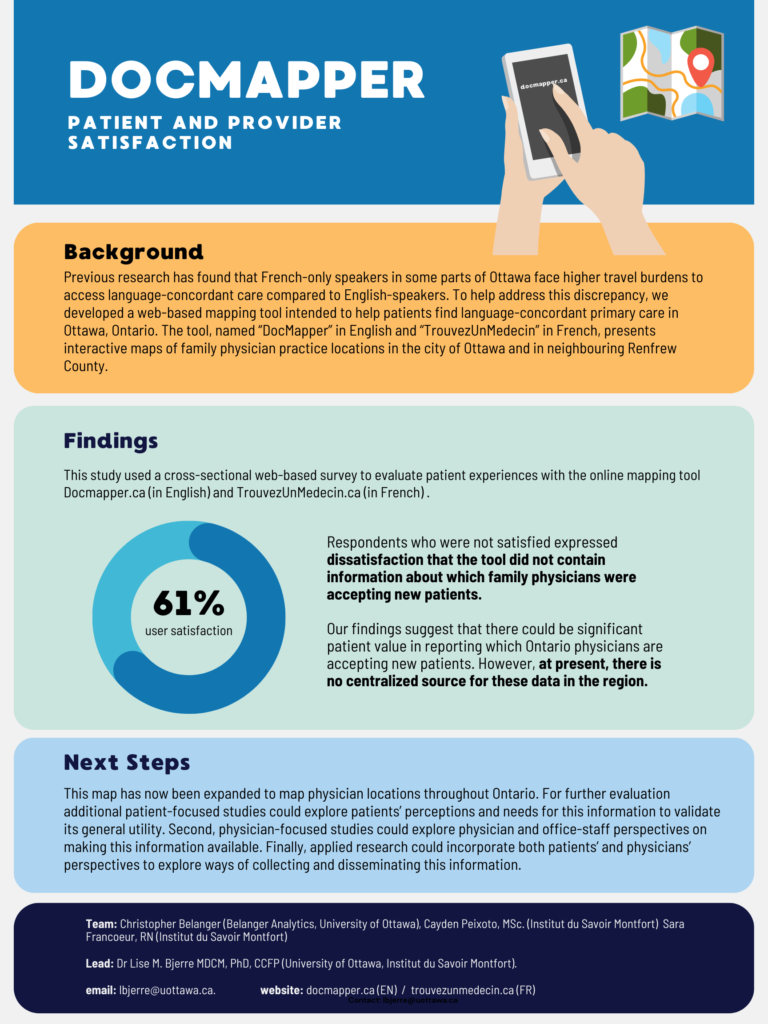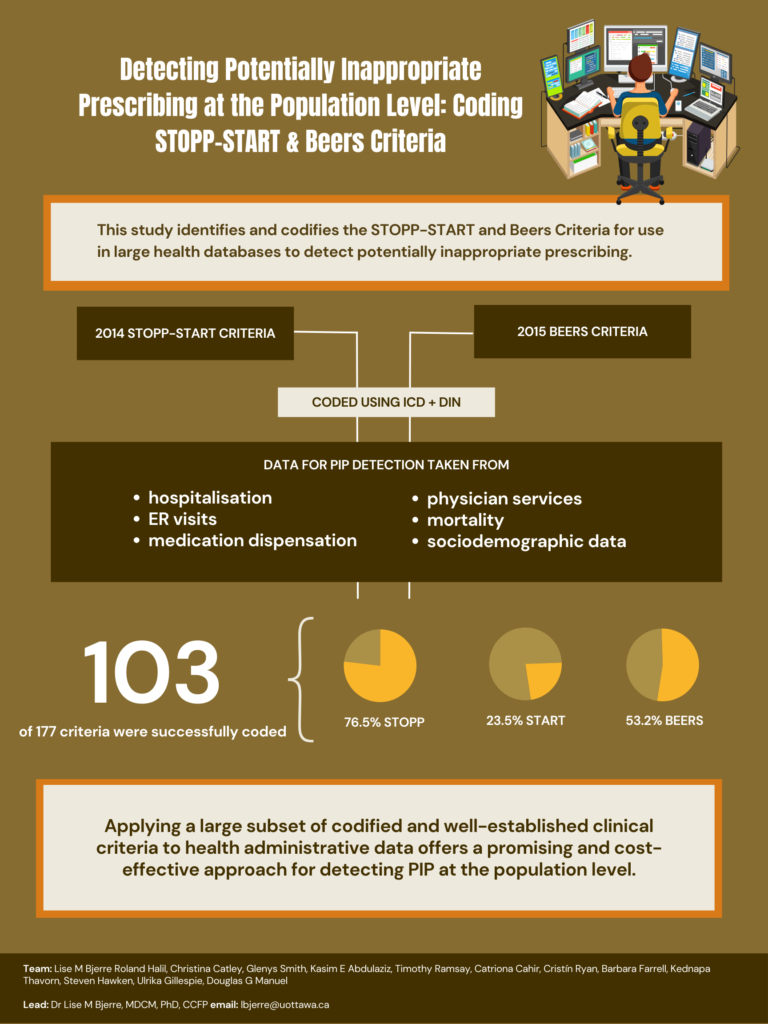Innovative Tools and Methods
Our team has a particular interest in employing novel tools and methodologies to improve healthcare access and enhance population health research. This work often involves collaboration with data scientists who are experts in their methodological fields, such as geomapping technologies, artificial intelligence, and machine learning.
FEATURED PROJECTS
AI/ML Compared to Classical Regression for Predictive Modeling
This study compared AI/ML models and traditional regression for predicting COVID-19 cases using Ontario health data. Gradient boosting trees (GBT) performed best, highlighting its potential for improving predictive accuracy in public health analytics
Patient and Provider Satisfaction with Geomapping Tool for Finding Concordant Care
This study evaluated patient satisfaction with an online map designed to help users find family physicians who speak their preferred language in the Ottawa region. While most respondents were satisfied, many wanted the map to indicate which physicians were accepting new patients. The findings highlight the need for an accessible, up-to-date database to improve healthcare access for linguistic minorities.
Assessing Potentially Inappropriate Prescribing at the Population Level
This study codified a subset of the STOPP-START and Beers criteria using diagnostic and medication codes to identify potentially inappropriate prescribing (PIP) in Ontario’s health administrative databases. Of the 177 criteria, 58.2% were successfully coded, demonstrating the feasibility of applying these clinical guidelines at the population level. This approach offers a cost-effective method for detecting PIP and supporting health policy decisions.
Geospatial Analysis of Disparities in Access to Primary Care in Ottawa
French-only speakers in Ottawa face statistically significant but modest inequities in travel burden when accessing language-concordant primary care compared to the general population. These disparities are more pronounced in rural neighborhoods, where travel burdens are higher. The study’s findings can inform policymakers and serve as a model for assessing access inequities in other regions.




